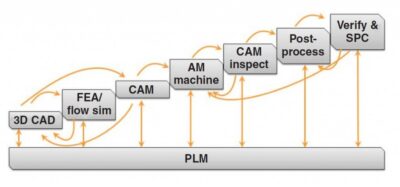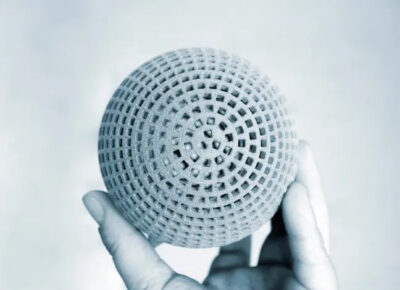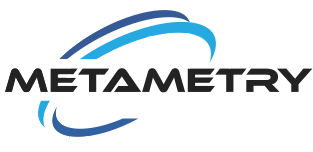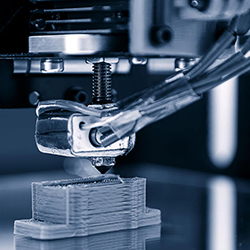for serial production
Executive summary
As additive manufacturing (AM) enters serial production, a definite framework is required to close the talent gap. For this, a range of new process monitoring systems are available. Some solutions are provided by AM system manufacturers for their own systems, whereas others are offered by third parties. This paper provides an overview of the technological principles behind these frameworks and explains their primary benefits in development and serial production.
This whitepaper gives an overview of current systems and examples of how they are used in manufacturing processes. The post-processing systems can be seen in the most recent systems placed on the market over the past decade – nearly every machine manufacturer in the field of additive manufacturing provides a certain solution for their machines. Third-party non-machine manufacturers and universities are also developing and implementing monitoring systems. Some users are even investigating the possibility of creating their own monitoring system to establish a fully featured quality management system.
Introduction – Motivation for AM
As additive manufacturing technology advances , its use range is more and more moving towards serial production, which creates a higher demand for process stability due to the reproducibility requirements placed on component quality.
No matter their size, digital-based companies perform better than non-digital firms: they invest more, are more innovative, have better management practices, grow faster, and create higher paying jobs. Research concluded that businesses that have adopted digital technologies coped better with the disruption unleashed by the COVID-19 pandemic. To say that we live in a Volatility, uncertainty, complexity and ambiguity “VUCA” world is an understatement. We indeed see that companies turn to 3D printing, also known as additive manufacturing, as an enabling technology to improve their flexibility and sustainable value. 3D printing pushes the production of goods closer to the consumer, democratizing manufacturing on a global scale and allowing products to be cost-effectively customized to consumers’ needs.
So why didn’t the adoption of 3D printing as an enterprise solution happen sooner and go faster? Until recently, 3D printing was too involved with closed eco-systems, a large landscape of software and material solutions; there were too many operational barriers for mainstream markets.
With such a disruptive innovation as 3D printing, sector growth has happened much more quickly than the education offering for the workforce. To become Additive Manufacturing (AM) experts, employees need to re-skill or up-skill into new roles.
Key Skills for AM
Industrial 3D printing offers companies immense potential in the development of new applications. The knowledge needed ranges from basic understanding of the technology to selecting components for production, as well as design and engineering, to scaling and validating production.
Understanding 3D Technologies
First, those interested in additive manufacturing need a comprehensive framework for the stages of the process chain and the different technologies. A 3D CAD file is obtained by a designer, 3D artists or a reverse engineering approach, such as 3D scanning. For industrial grade production, FEA simulations are to be done to verify critical aspects of the parts and possibly a flow simulation for certain applications like tooling in injection molding. CAM tools help to redesign the part for AM. “Design for AM (DfAM)” is a necessary steps to ensure the best possible outcome while introducing machine commands to the AM equipment. After the part is printed, we can use additional CAM tools to monitor the part and inspect it before pushing it to a post-processing schedule.
For high-end parts, verification, quality assurance and statistical part control (SPC) are applied to quality and defect data that are collected during the manufacturing process. This flow falls under the product lifecycle management (PLM) framework as a solution that manages all of the information and processes at every step of a product or service lifecycle across globalized supply chains.

Integrated Manufacturing Process Chain
Design & Simulation
Design is one of the most important parts of the additive manufacturing process chain. Without good design, every other stage is volatile. A skilled and creative designer can greatly contribute to decreasing the consumption of feedstock, reducing build time, and lowering the overall cost-per-part, making them a vital part of the team. Designing 3D printed parts for real world use requires an in-depth knowledge of methodologies and guidelines and the possibilities and limitations in 3D printing, and how to apply this knowledge to design viable yet innovative parts.
Application Engineering
To create a great application, you need to master both systems and software. To select the right quality part parameters for each case, you need knowledge about process parameters such as layer thickness, power levels, overlapping and contours. Proper part screening and selection are highly important. You need the skill set to decide, which part fits best economically and technically to grant AM success and profitability through AM part testing.
Process & Materials
Each material has its unique properties and will behave differently in the process. Therefore, you need material specific parameter editor training to understand the values and the implications for data preparation. At the same time, you need to study the attributes of different materials and decide which material is best for which job. It is important to know which materials shrink or warp when processed and by learning about the qualities of our most common material types, you will gain a deeper understanding of the data preparation stage and its importance. AI can be a powerful tool for material discovery and real-time process parameter tuning.
Data Preparation Skills
Understanding the data preparation process will enable you to optimize job preparation and reduce failed builds, contributing to build. You need to know how to design successful support structures, how to choose appropriate materials and how to select the most beneficial parameters for each part type. Processing large data sets may require powerful cloud computing capabilities.
Machine Operation
Before you can operate a system, you need intensive training on the safe and efficient operation of the machine itself and its peripherals. This includes the handling of the processing software, the set-up, job start and observation of the process and knowledge of the post-
processing procedures as well as machine cleaning, emergency protocols and maintenance.
Post-Processing
Additive manufacturing is not only about designing and preparing your project for 3D printing. A distinguishing professional feature is the level of post-processing skills needed to make realistic and accurate model representations. Therefore, you need to know about different methods and technology to postprocess parts and be able to apply approaches of part as well as support removal and surface finishing methods.
Definition of Quality
Recognize the definition of quality within the 3D printing industry and how to measure it during each stage of the process. You need to learn about quality criteria such as dimensional accuracy, tensile strength, hardness, density, and electrical conductivity. Some clients require certain levels of quality assurance (QA) for the part to qualify for use such as in aerospace, automotive and oil & gas industries.
Developing skills for business
Interested parties need to learn how to properly carry out a business case analysis. This will be the moment to integrate your knowledge of the entire process chain. Get to know the impact of key cost levers and how to reduce overall cost-per-part. You need to understand both the quantitative and qualitative side of the different types of business models and how to explain these to the many different stakeholders involved. Cost analysis tools require through knowledge of the process chain and beyond, such as warehouse, shipping, and possible assemblies.
Distributed Production
Before you start serial production, you should simulate your production. As a result, you can forecast the throughput and output of your production site based on the machine park equipment, operator shifts, machine maintenance procedures, etc. Since the entire process chain from procurement to production is digitally synchronized and all machines are connected and communicate via IoT platforms, you can easily align your production with local demands while significantly reducing transportation and storage costs. By distributed manufacturing, we mean globally distributed small and flexible production centers that produce where the customers are and where the demand arises. However, the business case must be presented for distributed options versus a centralized manufacturing business model.
Summary & Outlook
Whether you’re a professional seeking further development, or a business and innovation leader seeking new talent to take advantage of the technical advancements, you need to get your workforce familiar for these skills and framework.
Albeit immensely powerful, AM must be underpinned by an effective process chain with user-friendly design tools and a range of post-processing and metrology. Information must flow up and down the chain to link processes together.
MetaMetry has developed a comprehensive training program to optimize onboarding processes and accelerate the knowledge buildup at the forefront of innovation. The portfolio consists of on-site, online courses and e-learning for all levels of expertise making AM knowledge available anytime, anywhere.



